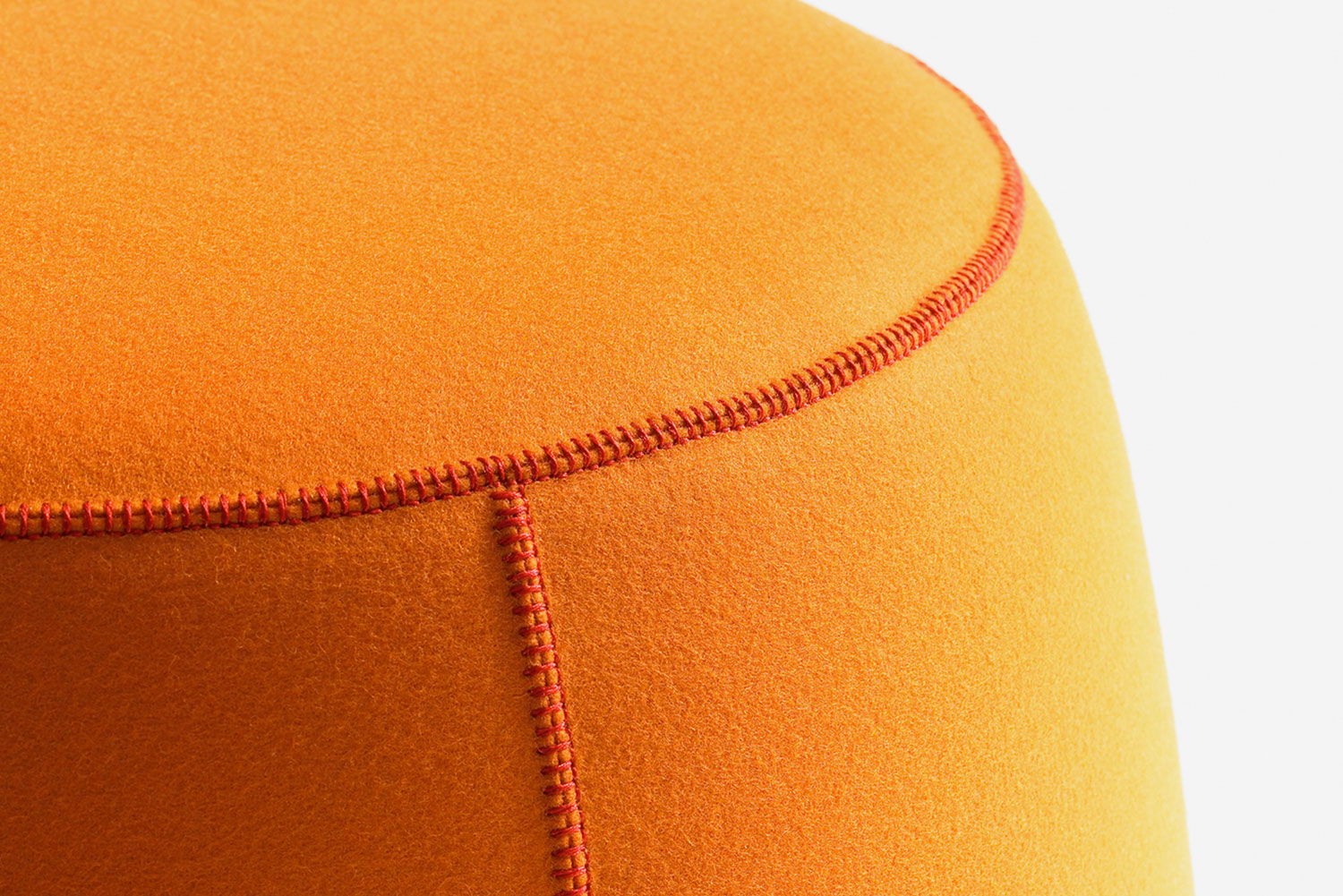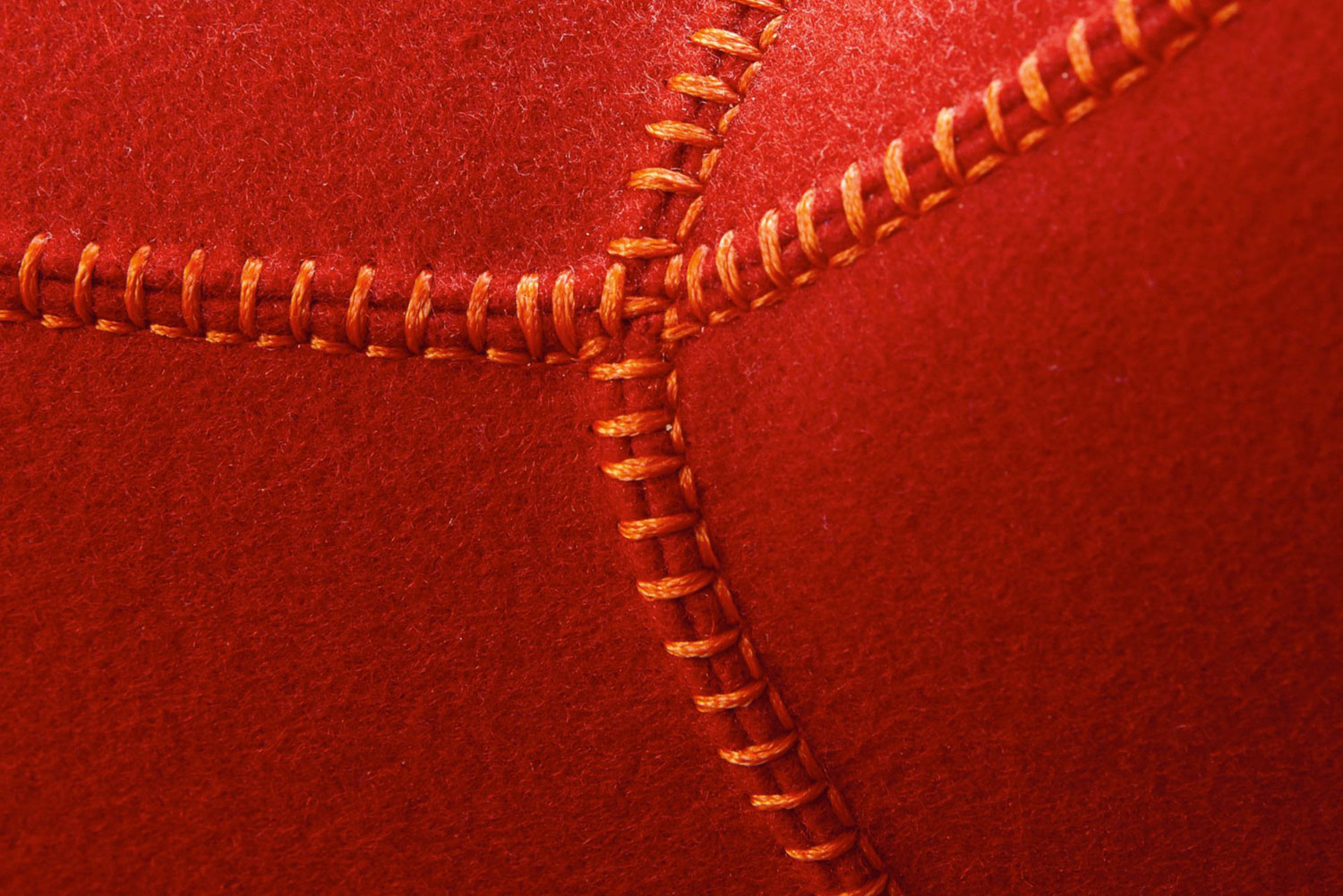GET 20% OFF
By subscribing to our newsletter
Below the surface: Choosing fabric for upholstered furniture
Colour and pattern are key aesthetic considerations when selecting fabric for upholstered furniture. But there’s much more to it than that. The textile should be suitable for the users, function and setting, as well as being malleable enough to stretch around the forms of the furniture. These factors will influence how easy or difficult a piece is to upholster and how it will fare over time. We go below the surface, speaking with KE-ZU upholsterer Michael Jenx and Samantha King from South Pacific Fabrics about other considerations that will help deliver the best, long-lasting result.
Durability
Durability is key for choosing fabrics, particularly in commercial projects where furniture needs to be hardwearing in order to withstand a lot of use and abuse. The rub rate, otherwise known as Martindale, is a measure of a textile’s durability. More durable textiles have tighter weaves and therefore flatter surfaces. The Martindale test involves rubbing a piece of worsted wool cloth in a circular motion on a flat-mounted fabric sample. The abrasion rating is the number of cycles (one circle) that the test fabric can withstand before showing a change in appearance, such as thread breakage or pilling. Fabrics for commercial jobs should have a minimum of a 30,000 Martindale rating, and a 50,000+ rating is suitable for high traffic areas such as lounge, dining and conference chairs.
Stretch
It is necessary to ensure the textile has a reasonable amount of stretch to achieve a beautiful form as it wraps over furniture that has a lot of curve. Stretch is particularly important when upholstering a product with a lot of curve so that the fabric doesn’t puddle or bunch over time. The collagen in natural fibres, such as wool and silk, will allow the fabric to stretch but always go back to its original form.
Simpler furniture with straight edges can be upholstered in most anything, however we advise avoiding heavier fabrics when upholstering tall/large sections as they can droop. Heavy canvases and reconstituted fabrics can be difficult because they have limited stretch, and some textiles may be hard to sew because they wrinkle a lot. We have found that has been the case with some velvets, but definitely not all.
Seams
Some fabrics will require extra seams inserted depending on the furniture piece. It is something we try to avoid and would prefer to increase or decrease the pattern to do so. Sometimes a pure wool upholstery won’t require extra seams because of the stretch, however a vinyl or leather would due to the curve of the sofa.
Resistance
Fabrics in healthcare environments can help play a role in preventing the further spread of bacteria. Textiles specific for healthcare are water resistant, hypoallergenic and have anti-bacterial properties to help create a healthier environment.
Talk to the team at KE-ZU
Our KE-ZU account managers and upholsterers are knowledgeable and experienced in selecting the right textile for function and form. We invite you to talk to the team about the best options and we can ask for fabric houses to send us a sample to assess the suitability before you embark on a big job.
Thanks to Samantha King from South Pacific Fabrics for her assistance in developing this article.
For more information about upholstery options for KE-ZU product please contact us.
- 2020
- 2019
- 2018
- 2017
- 2016
- 2015
- 2014
- 2013
- 2012
- 2011
- 2010
- 2009






